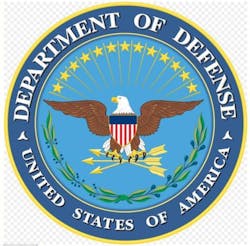U.S. defense and homeland security spending to increase through 2018, says Research and Markets
DUBLIN, 28 Sept. 2013. U.S. defense spending is expected to increase from 2013 to 2018 at a compound annual growth rate (CAGR) of 1.93 percent, with homeland security expenditures growing at CAGR of 2.15 percent, with increased investments in such homeland security products as surveillance equipment and patrol vessels, according to Research and Markets’ "Future of the US Defense Industry - Market Attractiveness, Competitive Landscape and Forecasts to 2018" report.
The U.S. defense market, with a defense budget of $613.9 billion in 2013, is expected to increase at a CAGR of 1.93 percent over the forecast period, although funding for overseas operations is estimated to decrease. Plans for acquisition of advanced defense equipment coupled with replacement of old and obsolete equipment are projected to drive the country's capital expenditure presenting growth opportunities for the defense equipment and technology suppliers, despite looming threat of budget cuts and sequestration.
The homeland security market of the U.S. is expected to be driven by missions such as preventing terrorism and enhance security; securing and manage borders; enforcing and administering immigration laws; safeguarding and securing cyberspace; as well as ensuring disaster resilience. During the forecast period, the US is expected to invest in homeland security products such as surveillance equipment, and cutters and patrol vessels, and the budget of the U.S. is expected to increase from $60.7 billion in 2013 to $65.3 billion in 2018, registering a CAGR growth of 2.15 percent.
The new report provides detailed analysis of the current industry size and growth expectations from 2014 to 2018, including highlights of key growth stimulators; benchmarks the industry against key global markets; and provides a detailed understanding of emerging opportunities in specific areas.
The report provides:
- detailed analysis of the current industry size and growth expectations from 2014 to 2018, including highlights of key growth stimulators, and also benchmarks the industry against key global markets and provides a detailed understanding of emerging opportunities in specific areas
- trend analysis of imports and exports are included, together with their implications and impact on the U.S. defense industry
- five forces analysis to identify various power centers in the industry and how these are expected to develop in the future
- identification of possible ways to enter the market, together with detailed descriptions of how existing companies have entered the market, including key contracts, alliances, and strategic initiatives
- the competitive landscape of the defense industry in The US. It provides an overview of key defense companies, both domestic and foreign, together with insights such as key alliances, strategic initiatives, and a brief financial analysis
Companies mentioned include:
- Bell Helicopter Textron
- Boeing
- General Dynamics
- General Electric (GE) Aviation
- Honeywell
- Inc
- International Inc
- L-3 Communications Corp
- Lockheed Martin
- Northrop Grumman Corp
- Raytheon
- Science Application International Corp. (SAIC)
- Sikorsky Aircraft
- Textron Marine and Land Systems

Courtney Howard | Executive Editor
Courtney, as executive editor, enjoys writing about all things electronics and avionics in PennWell’s burgeoning Aerospace and Defense Group, which encompasses Military & Aerospace Electronics, Avionics Intelligence, the Avionics Europe conference, and much more. She’s also a self-proclaimed social-media maven, mil-aero nerd, and avid avionics geek. Connect with Courtney at [email protected], @coho on Twitter, and on LinkedIn.

